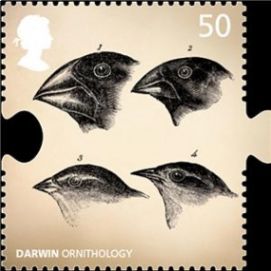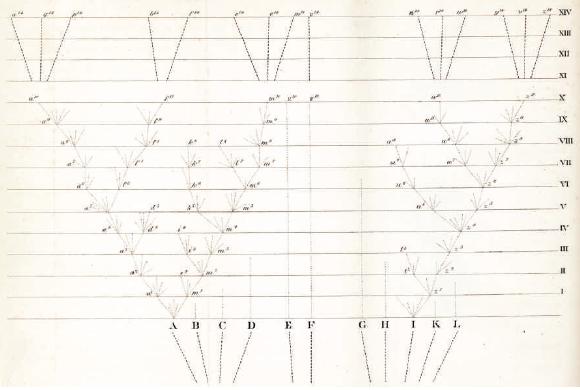Two senior American biologists published an article in the journal Nature in which they translated into today's language Darwin's assessments regarding macroevolution

Evolutionary biologists have long thought to understand the connections between microevolution (adaptation to the environment), which can be observed both in nature and in the laboratory, and macroevolution (the splitting of species and the origin of the division of the taxonomic hierarchy above the species level, and the development of complex organisms) for which it is not easy to obtain evidence because that they take place over a much longer period of time than a human life.
The connection between these processes is also a source of conflict between science and religious beliefs. Biologists sometimes forget that Darwin proposed a way to solve the problem and that his proposal is now ripe for re-evaluation in the light of recent research.
Charles Darwin and Alfred Russel Walls based their insight that organisms evolved through natural selection on four principles: first, that organisms have individual variations that are successfully passed from parent to offspring; Second, all creatures give birth to more offspring than are required to replace them in the next generation; Third, that limited resources create a 'war of existence' that regulates the size of the population, so that only the offspring die without reproducing; And fourth, that the individuals that survive and reproduce are on average the best of the individual variations, more suited to their local environment than those that did not survive.
Given these four principles - evolution through natural selection (the principle of inheritance with adaptations claimed by Darwin), is the natural result. These adjustments within the population over time are henceforth referred to as microevolution. Darwin expected that microevolution would lead to a gradual and continuous process.
The term macroevolution, in contrast, refers to the origin of new species and the hierarchical taxonomic division above the species level, and it is also the origin of complex adaptations such as the eyes of vertebrates. Macroevolution poses a problem for Darwin because the principle of inheritance with adaptations predicts gradual transitions between small-scale adaptations in populations and large-scale phenomena. However, there is little evidence of such a process in nature. Instead, the natural world is usually characterized by gaps, or discontinuities. One type of gap refers to the existence of perfectly functioning organs, such as the eye or morphological innovations such as the wings, both of which are in a state due to creatures living today without leaving evidence of their development. Another category is the species and higher ranks in the taxonomic hierarchy are separated by gaps with no evidence of transition between them. These gaps in addition to the discontinuity of appearance and disappearance of types in the fossil record creates a conceptual divide between microevolution and macroevolution.
In an article they published in the journal Nature, in the issue that came out this week on the occasion of the 200th anniversary of Darwin's birth, David Resnik from the Department of Biology at the University of California and Robert Rickleps from the Department of Biology at the University of Missouri detail many examples of change, which mainly included extinctions and clearing of niches, for various reasons such as climate change, entry of new carnivores, etc. Adaptation to new ecological niches enables the acceleration of the adaptation process and the creation of new species.

In the summary of the article they write that most evolutionary biologists believe that Darwin explained macroevolution simply as microevolution on a large scale, in fact Darwin added a rule that defined these relationships.
An example of such a pattern of lineage splitting is the rapid split early in the history of life, followed by a gradual slowing of the rate of divergence. Seeds from a species of plant that has developed resistance to radiation filling an ecological niche left vacant after a mass extinction, for example, or from spreading into a new adaptation area made possible by a natural disaster that made this area more accessible. The ability to breed, which is also limited in the new area, serves as a barrier to further divisions and causes the new species to stabilize.
As Darwin predicted in the divergence principle, rapid divergence is caused when a lineage develops an adaptation that allows it to cross ecological boundaries. Examples include the repeated invasion of mildly saline environments by ancestors of a separate lineage of mangrove plants. The invasion of temperate environments by lineages of trees that developed in frozen areas, and the geographical spread in the new edges of the deserts of a species of SHINK living in the Australian deserts due to the drying of the climate. Timothy Barclay and his colleagues summarized studies that showed other cases of geographical spread on a large scale - for example, the divergence of bats from a single ancestor that developed flight and today the genus contains over 1,100 species.
And of course, we must not forget the great extinctions, at least some of which have been proven to have resulted from an asteroid impact from space that caused a chain reaction that included fires, followed by a nuclear winter, in which the sky was covered in dust for many months, which prevented sunlight from entering and caused the collapse of all ecosystems.
In other words, the splitting of species does not just happen gradually but is accelerated in an environment of occupying new niches. This acceleration in the new niches, until it stops, is the driving force of macroevolution, and it also consists of many microevolutions.
In conclusion, Reznik and Ricklefs write that many people see the book on the origin of species as a beautiful fossil, but it is a living document that continues to offer insights and guide modern research. It contains a wealth of ideas that have fallen through the cracks of the modern synthesis and, when properly updated, could provide inspiration for answering some of the still open questions in evolutionary biology.
For the article in Nature (subscription required)
In the same topic on the science website:

2 תגובות
Interesting article
It would be interesting to read an article about those questions that are still open in evolutionary biology.
Great article and I wish he would shut up once and for all all the stupid doss who keep lying to try to justify their stupidity.